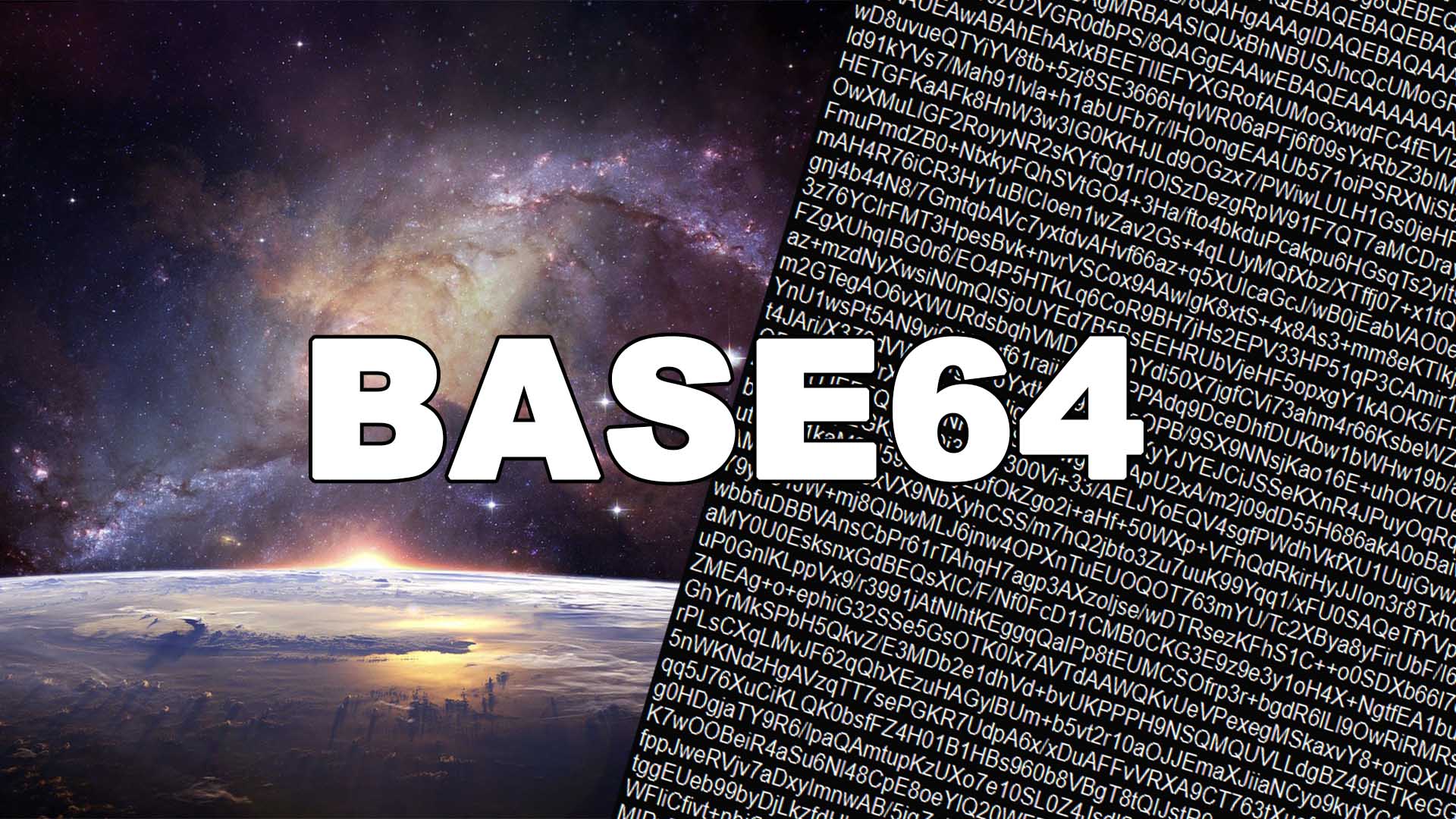In this article we define Base64, explain how it works, examine its benefits and applications, and show how to decode Base64-encoded data.
What is Base64 Encoding?
Let’s start by explaining Base64. Base64 refers to a family of binary-to-text encoding techniques that express binary data in 24-bit sequences that can be represented by four 6-bit Base64 digits. Typically, this is performed by converting the binary data into a string of ASCII characters, which may then be easily transferred or saved.
The name “Base64” comes from the fact that the encoding uses 64 different characters, which is 2^6. The characters used in base64 encoding are:
ABCDEFGHIJKLMNOPQRSTUVWXYZabcdefghijklmnopqrstuvwxyz0123456789+/Base64 encoding divides binary data into groups of 24 bits. Each 24-bit group is then divided into three 6-bit values. The base64 alphabet is then used to encode these three 6-bit values.
The binary data 00000000 11111111, for example, would be encoded as the base64 text “AP8=”.
Base64 encoding is a popular method for encoding binary data for transmission or storage. This is because it is a well-known and well-defined standard that is extremely straightforward to implement. Base64 encoding is also relatively efficient, adding only 33% overhead to the original binary data.
We have an online Base64 encoder, you can check it out here.
How Does Base64 Encoding Work?
Let us now define what the term “encoding” entails. In computer science, encoding is the process of converting data from one format to another. This can be done for a variety of purposes, like as making data more compact, transportable, or secure.
As previously stated, Base64 encoding divides binary data into groups of 24 bits. Each 24-bit group is then divided into three 6-bit values. The Base64 alphabet is then used to encode these three 6-bit values.
The Base64 alphabet contains all 26 letters of the alphabet (double, including upper and lower case), as well as the numbers 0-9 and the symbols + and /.
The first 6 bits in a set of 24 bits are utilized to choose a character from the Base64 alphabet. Following that, the following 6 bits are utilized to select a character from the Base64 alphabet, and so on.
If the last set of bits is insufficient to select a character from the Base64 alphabet, it is padded with zeros. Padding characters are not part of the Base64 alphabet and are ignored while decoding encoded data.
Benefits of Base64 Encoding
Base64 encoding is a versatile and effective method for encoding binary data for a range of applications.
- Efficiency: Base64 encoding is relatively efficient, adding approximately 33% overhead to the original binary data. This makes it an excellent choice for encoding binary data that must be effectively stored or delivered.
- Compatibility: Because Base64 encoding is a well-known and well-defined standard, it is compatible with many different systems. This makes it an excellent choice for encoding binary data that must be transported between platforms.
- Security: Base64 encoding can be used to prevent unwanted individuals from reading binary data. Because the Base64 alphabet is not widely used, it is more difficult to predict the encoded data.
- Versatility: Base64 encoding is capable of encoding a wide range of binary data types, including images, audio, and video. As a result, it is a versatile tool for encoding binary data for a number of applications.
Uses of Base64 Encoding
Now let’s take a look at some concrete examples that make the Base64 advantage even clearer.
- Storing binary data in text files: Binary data can be stored in text files using Base64 encoding. This is helpful for storing binary data in systems that do not allow binary files, such as email.
- Transmitting binary data over a network: Binary data can be transmitted over a network using Base64 encoding. This is useful for sending binary data between systems like a web server and a web browser.
- Protecting binary data from unauthorized access: Base64 encoding can be used to prevent unauthorized access to binary data. This is useful for securing binary data stored in a file or transmitted via a network.
- Encoding email attachments: Email attachments can be encoded using Base64 encoding. This is handy for encoding binary attachments like images or documents to send as email messages.
- Encoding data in JSON: JSON data can be encoded using Base64 encoding. This is useful for encoding binary data in JSON objects and using them in JSON applications.
- Encoding data in XML: Data in XML can be encoded using Base64 encoding. This is useful for encoding binary data in XML documents for usage in XML applications.
- Encoding images: Converting images to Base64 can be ideal if, for example, you want to store images in text files or, in some cases, display them on web pages. (Here you can encode images.)
Base64 Decoding
The process of turning a Base64 string back into its original binary form is known as decoding. This can be accomplished by a variety of means, including:
- Using a Base64 decoder online: We also have a Base64 Decoder, you can try it here. Online and completely free.
- Using a Base64 decoder in a programming language: Most programming languages have built-in functions for it, but if not, you can find libraries for it.
- Manually decoding a Base64 string: Not recommended unless you like a challenge and have plenty of time.
Worth considering: The decoding procedure will fail if a Base64 string contains incorrect characters. This can occur if the Base64 string is malformed or was not encoded appropriately.

